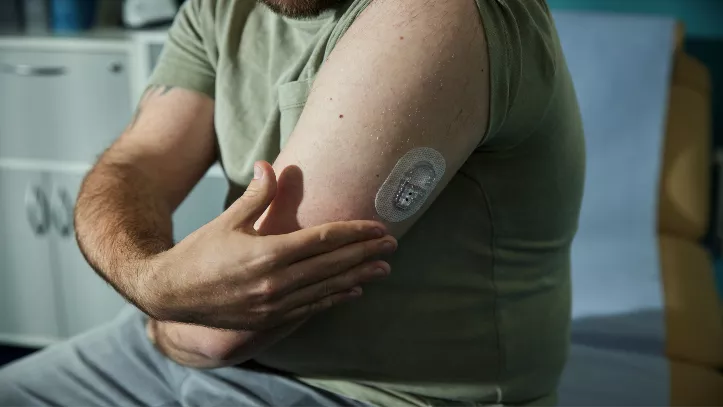
Our Senior Policy Officer Anthony Walker looks ahead to the near future with three examples of exciting diabetes tech in development.
Technology plays an increasingly significant role in diabetes care, and huge progress has been made over recent years to help people with diabetes live better and longer.
From Flash glucose monitors and continuous glucose monitors, smart pens, insulin pumps and, increasingly, closed loop technology – there is a growing range of devices and tools available.
Diabetes technology is still developing, and the work to ensure that people with diabetes can benefit equally from this progress continues too. This includes raising awareness of what’s available, influencing health systems to adopt them, and ensuring any progress in tech has the needs of people with diabetes considered first-and-foremost.
As well as making the latest tech accessible now, we also keep a keen eye on the developments that signal what the next generation of tech will be.
While it is of course important to not lose sight of reality in the hype of the new, it’s safe to say there are a lot of interesting and exciting things on the horizon – and here we look ahead to three innovations that have caught our attention recently.
Further advances in closed loop
As mentioned above, closed loop systems – sometimes called automated insulin delivery – are already changing diabetes care.
These systems are building on the advances in continuous glucose monitoring (CGM) and insulin pumps to link compatible devices with a computer algorithm that automatically calculates the amount of insulin needed.
Currently, hybrid closed-loop systems still require manual input from users to calculate insulin doses for meals and apply advanced warnings for exercise, but developers are learning from the experiences of users.
Researchers are now conducting further research to understand this better and fine-tune the algorithms with a hope that they will eventually be able to do this automatically, such as through the iLet 'bionic pancreas'.
Furthermore, while the tech has been consistently shown to help people improve their blood glucose management: achieving greater time-in-range and reduce the frequency and severity of hypos, insulin is just one aspect of its potential use.
Another hormone, glucagon, is released by the body to regulate blood sugars when they get too low, and companies are developing “multi-hormone” closed loop systems that can deliver glucagon as well as insulin, making another important step in the evolution of the tech.
Continuous ketone monitoring
CGM devices are familiar to many people living with diabetes, and similar thought is being given toward how to improve testing for other important measures like ketones.
Ketones are a type of chemical produced in the body when it breaks down fat for energy, and they typically develop during periods of fasting, extended exercise and when carbohydrates aren’t available to be used for energy.
This can be a natural response to help fuel our bodies but can be extremely dangerous for people with diabetes who use insulin. If there isn’t enough insulin available, ketone levels can build up to very high levels and cause diabetic ketoacidosis (DKA), which requires urgent treatment and can be life-threatening.
Ketone testing is essential to help people understand when their levels may be too high, especially when feeling unwell as part of Sick Day Rules, but the current urine and finger prick tests are inconvenient and tend to be used infrequently meaning they can easily get misplaced or expire in storage.
Work to upgrade the sensors that have revolutionized blood glucose testing for other purposes is already well underway and continuous ketone monitoring (CKM) is a key part of this – helping protect people against the risk of DKA.
This would be undoubtedly useful, but other more practical questions - such as when ketone monitoring is needed, what the target ranges for people with diabetes should be, and how information should be displayed to avoid overload and raising concerns unnecessarily – are also being closely considered to ensure that CKM can be integrated into devices effectively and safely.
Non-invasive glucose monitoring
Non-invasive glucose monitoring promises blood testing without the need for even the small needle that CGM sensors use to measure glucose levels.
A leading concept in this space uses lasers to shine infrared light on the skin, delving beneath the skin surface to analyse the make-up of underlying tissue and sending this information back to a reader device.
Recent studies have shown that this technique can directly measure glucose concentrations through the skin, and the accuracy of the results have been refined to reach a level close to current CGM devices.
The next step is including this in a useable wearable device, and there are plans to have a wristwatch type prototype ready in the next two years.
There are other challenges, such as how to ensure devices are calibrated and affordable, but non-invasive glucose monitoring also offers the opportunity to overcome some of the practical and environmental drawbacks of CGM by taking away the need for consumables.
If the technology can be incorporated into a wearable device, it may only need regular software updates to work and stay up-to-date.
